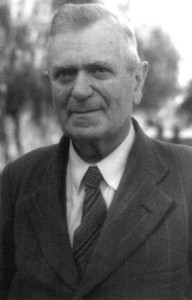Axial tilt
Dunbavin, Paul
Paul Dunbavin (1954- ) is a data and business analyst. “His interest for over 35 years has been cross- disciplinary research into prehistory, which he has occasionally published in his books and various articles and papers.”
disciplinary research into prehistory, which he has occasionally published in his books and various articles and papers.”
He is the author of controversial but well-researched books relating to the ancient history of Britain. In one of these[100], he identified the Picts of Scotland as being originally from the Baltic. In another[099] he investigated the possible origins of Plato’s story of Atlantis. Using mythological, geological and archaeological sources he concluded that an asteroid or comet collided with the Earth around 3100 BC resulting in the tilting of the Earth’s axis. Dunbavin argued that this impact caused dramatic climate and sea-level changes that led to the submergence of a Neolithic civilisation on a low-lying plain off the coast of Wales. He believed that this destruction was the inspiration for the Atlantis legend. David Furlong claimed to have independently arrived at the same conclusion[285].
In 2005, Dunbavin published another volume[101] on ancient catastrophes and their possible connection with cometary impacts or near-collisions. In this connection, he briefly refers to the work of George F. Dodwell.
In 2019, Dunbavin expanded his website, which also includes a more extensive review of Dodwell’s work(c). 2019 also saw the publication of his latest book, Towers of Atlantis [1627]. There is more information about this and his other books on his website(a), which also includes links to other related sites(b).
Paul Dunbavin in his Atlantis of the West [0099] proposed that the Coligny Calendar might be considered a lunisolar calendar. Some years later in 2005 he returned to the subject in Under Ancient Skies [0101] and devoted Chapter 5 plus Appendices A & B to a discussion of Critias 119d, which relates how the kings of Atlantis met alternatively every five and six years. Dunbavin suggests that this is reflected in the Coligny Calendar and that it possibly had antecedents that would bring its functions back to the time of Bronze Age Atlantis(d), if not earlier(e). Dunbavin’s reaction to the Calendar is best quoted – Now it is this passage more than any other that convinces the present author (Dunbavin) of the authenticity of the Atlantis myth“. He touches on this matter again in Towers of Atlantis [1627] and Prehistory Papers [1758].
Once again, Dunbavin has returned to the subject of the British Isles during the Neolithic period and their possible association with Plato’s story of Atlantis. He draws on the ancient Egyptian concept of a paradisaical afterlife comparable with the Greek ‘Elysian Fields’, both believed to be located in the far west. These notions are seen by Dunbavin to have possible parallels in Plato’s description of the Plain of Atlantis.
The author highlights the value of mythology, which he employs in conjunction with classical writers such as Herodotus, Diodorus Siculus as well as others to lead us to his considered belief that the Irish Sea before its eventual inundation after the last Ice Age had been home to the Plain of Atlantis, stretching from the island of Anglesea to the Isle of Man. This book should be read in conjunction with his previous offering, Atlantis of the West. Rather than wild speculation, Dunbavin has again offered evidence, although subjectively interpreted, which offers a coherent hypothesis.
Dunbavin updates his website from time to time, the latest was November 2019. Anyone interested in his theories should check his site regularly.
In 2020, Dunbavin published Prehistory Papers, “which provides a permanent repository for the various articles or papers originally published on the author’s website; together with some older articles; they expand on the cross-disciplinary research in the author’s earlier books.“
>In 2024, Dunbavin returned to one of his favourite topics, namely, catastrophism in the Holocene (the current geological epoch), with an extensive paper reviewing aspects of the era, such as sea level change, climate change and the much debated Younger Dryas Impact Hypothesis(f).<
(a) www.third-millennium.co.uk
(b) https://www.third-millennium.co.uk/links
(c) https://docs.wixstatic.com/ugd/e5604c_6769a6112622417badfe134954b2874a.pdf
(d) e5604c_465f3f96346041fb94f8e5f960804f1f.pdf (filesusr.com)
(e) (99+) (PDF) The Neolithic Calendar in Plato’s Critias | Paul Dunbavin – Academia.edu
(f) (99+) Catastrophism and Climate during the Holocene Epoch | Paul Dunbavin – Academia.edu *
Dodwell, George F.
 George F. Dodwell (1879-1963) was a leading Australian astronomer, who made an extensive study of ancient gnomons and discovered that they deviated from what had been anticipated. A gnomon is the part of a sundial that casts the shadow. He concluded that there was consistent evidence that the tilt of the earth’s rotational axis was altered around 2345 BC. This view supported those that have claimed that the poles shifted within the memory of man, possibly as a result of a close encounter or impact with an extraterrestrial body such as a comet. Some have gone further and attribute the destruction of Atlantis to this clash. Dodwell’s complete work on the subject can now be read on Barry Setterfield’s website(a).
George F. Dodwell (1879-1963) was a leading Australian astronomer, who made an extensive study of ancient gnomons and discovered that they deviated from what had been anticipated. A gnomon is the part of a sundial that casts the shadow. He concluded that there was consistent evidence that the tilt of the earth’s rotational axis was altered around 2345 BC. This view supported those that have claimed that the poles shifted within the memory of man, possibly as a result of a close encounter or impact with an extraterrestrial body such as a comet. Some have gone further and attribute the destruction of Atlantis to this clash. Dodwell’s complete work on the subject can now be read on Barry Setterfield’s website(a).
Dodwell, a devout Christian, concluded that it was this sudden shift of the earth’s axis that led to the Flood of Noah. Reinaud de Jonge proposed a similar linkage between the 2345 BC cosmic encounter and the biblical Deluge. He also claimed that a large collection of petroglyphs at Mougau-Bihan in Brittany were inspired by this event.
Rene Noorbergen (1928-1995) mentions in his Secrets of the Lost Races [612.20] that Dodwell wrote to Professor Arthur J. Brandenberger of Ohio State University, outlining his theory in the following manner; “I have been making during the last 26 years an extensive investigation of what we know in astronomy as the secular variation of the obliquity of the ecliptic. From a study of the available ancient observations of the position of the sun at the solstices during the last three thousand years, I find a curve which, after allowing for all known changes, shows a typical exponential curve of recovery of the Earth’s axis after a sudden change from a former nearly vertical position to an inclination of 26½ degrees, from which it was returned to an equilibrium at the present inclination of 23½ degrees during the interval of the succeeding 3,194 years to A.D. 1850. The date of the change in the Earth’s axis, 2345 B.C., is none other than that of the flood recorded in the Bible, and the resulting conclusion is that the Biblical account of the flood as a universal one, together with its story of Noah’s Ark, is historically true.”
Dodwell was also impressed by the work of the creationist, George McCready Price (1870-1963), who had also concluded[1616] that the Earth’s axial tilt had been altered as a result of an impact with a celestial body. Price also linked the event with the biblical Deluge.
Dodwell referred to a paper of F.S.Richards on the orientation of the Temple of Ammon at Karnak(b), which indicated an anomalous obliquity of the ecliptic of 25°9’55”. This led to considerable debate regarding the age of the temple. William Fix drew attention[871.264] to the widespread reuse of very ancient sacred sites by successive cultures, which might explain the incompatibility between the apparent age of the most recent temple and the greater antiquity suggested by the obliquity of the ecliptic. Alternatively, it might also indicate an encounter with an extraterrestrial body that affected the Earth’s axis and caused widespread destruction, including, according to some theories, the destruction of Atlantis!
S.F. Wells published a paper(h) on Graham Hancock’s website in which he investigated the Avebury stone circle and its associated monuments and found evidence that they “show knowledge of past Polar positions”.
In the interests of balance, I must refer readers to an extensive 2013 paper(f) by a creationist, Dr Danny Faulkner, who has cast doubts on Dodwell’s conclusions. More recently Paul Dunbavin also published a positive critique of Dodwell’s work in Prehistory Papers [1758.71]. This essay was written a few years ago and is now available on his website(k)>>as well as the academia.edu website(l).<<
Another interesting comment is offered by Barry Setterfield, who wrote(a) that “ Dodwell has assumed here that the original axis tilt of the earth, before 2345 B.C., was nearly upright. For that reason, he supposed a very strong impact was necessary to jolt the earth from that position to its current 23.5-degree tilt. This is why a number of astronomers have rejected Dodwell’s work in this area. However, if the axis tilt was greater than its current axis tilt before 2345 B.C., then an impact of much less force would have been required to restore the earth to a slightly more upright position. The evidence for this greater axis tilt may be seen in the evidence of the ice age which covered most of Europe prior to 2345 B.C.”
Malcolm Bowden, the author of True Science Agrees with the Bible[1612], also wrote a pamphlet[590] supporting Dodwell’s findings and later produced a YouTube video explaining in detail Dodwell’s axial tilt theory(g). Paul D. Ackerman offers another review of Dodwell’s work from a creationist viewpoint(j). Ackerman is an ardent supporter of the concept of a young Earth [1727].
In 2011, Mike Baillie, the renowned dendrochronologist, gave a PowerPoint presentation(d) at the Quantavolution Conference in Athens, which offered tree-ring evidence that clearly demonstrated an ‘event’ in 2345 BC, which has counterparts in early Chinese and Middle East records suggesting a cometary encounter/impact! Baillie also notes that Isaac Newton and Edmund Halley both thought that Archbishop Ussher’s Flood of 2349 BC was due to a comet.
As early as 1696, William Whiston claimed that the earth’s encounter with a comet led to the biblical Deluge.
More recently, Andrew Bourmistroff, a Russian researcher, has determined that the orientation of the Great Pyramid at Giza is off by 9.85 degrees west of true north(e). The full significance, if any, of all these details has yet to be fully determined.
(b) Wayback Machine (archive.org)
(d) https://www.qconference-athens-2011.grazian-archive.com/the2345topicmbai/index.html
(e) https://web.archive.org/web/20150909160031/https://www.world-mysteries.com/andb1.htm
(f) https://answersingenesis.org/astronomy/earth/an-analysis-of-the-dodwell-hypothesis/
(g) https://www.youtube.com/watch?v=21WvVH4CXR4
(h) https://grahamhancock.com/wellssf1/
(i) THE COMET CATASTROPHE OF c.2345 BC – 1 (archive.org)
(j) https://creationism.org/csshs/v07n4p02.htm
(k) Updating George F Dodwell | pauldunbavin (third-millennium.co.uk)
(l) (96) Updating George F. Dodwell | Paul Dunbavin – Academia.edu *
